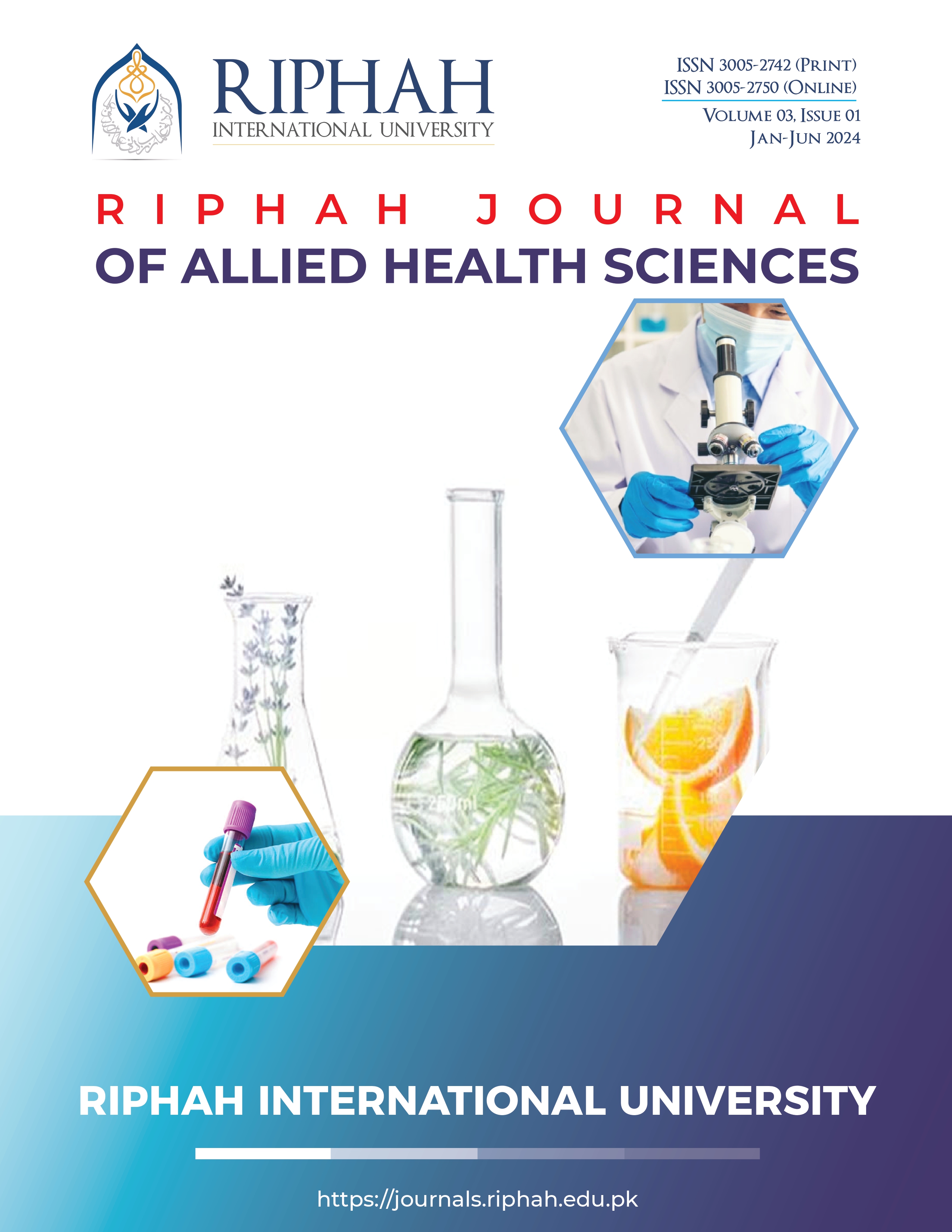Frequency of Bacterial Infections with Extended-spectrum Beta-lactamases (ESBL) in Diabetic and Non-Diabetic Patients
Keywords:
Kirby-Bauer method, Resistance, Extended spectrum beta lactamases, DiabeticAbstract
Background: Diabetes is a group of metabolic diseases characterized by high blood sugar levels that persist over long time that may lead to immunocompromised condition. Diabetic patients are vulnerable to multiple infections by multidrug -resistance bacteria and the bacterial resistance is achieved through the production of beta-lactamases against beta-lactam drugs. Extended spectrum beta lactamases (ESBL)-producing pathogens has been the subject of recent pharmacokinetic and pharmacodynamic research.
Objective: This research was aimed to explore the frequency of Extended-spectrum Beta-lactamases (ESBL)-producing bacterial infections in diabetic and non-diabetic patients.
Methodology: A cross-sectional study was conducted and urine sample of Diabetic and non-diabetic Patients with symptoms of stomachaches, diarrhea, pneumonia, and urinary tract infections were used for culture and sensitivity (Kirby-Bauer method). All the data was recorded and analyzed using SPSS version 26. Descriptive statistics were used to present frequency and percentages.
Results: In this study, overall, E. coli and Acinetobacter were found to be most prominent ESBL producing bacteria among them most of the patients (n= 131) were resistant to amikacin.The most frequent pathogen was E. coli, that isolated from 80% in diabetics and 48% in non-diabetics individuals. Klebsiella, Acinetobacter, and Pseudomonas were found Gentamicin-resistant. Meanwhile, most profoundly presented comorbidites were diabetes (n=109) and abdominal pain (n= 119). Uropathogenic bacteria generated ESBL regardless of age, gender, or clinical isolate source. However, mostly patients (n= 131) stayed 2-4 days in hospital that showed significant effect of medication.
Conclusion: These risk variables can identify patients at high risk of ESBL-producing bacteria, enabling more effective empiric antibiotic treatment. Diabetics should get laboratory-assisted antibacterial therapy.


